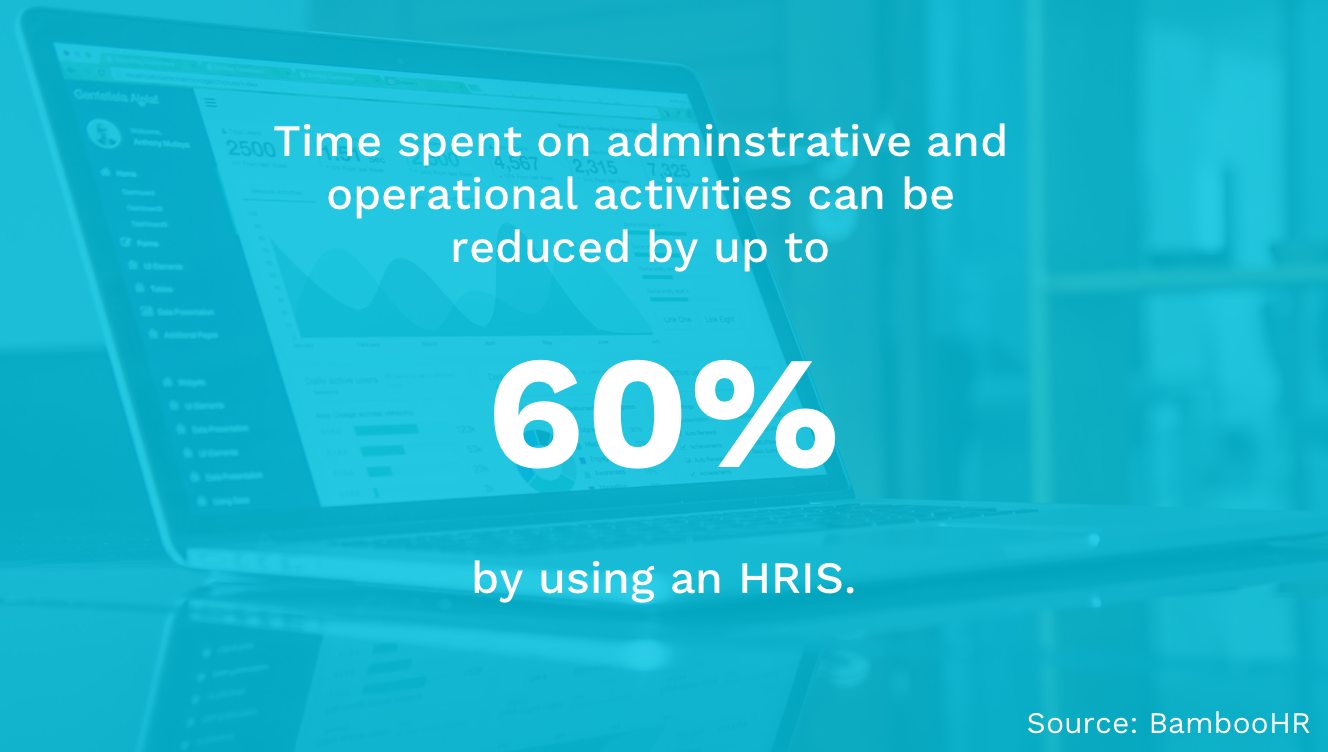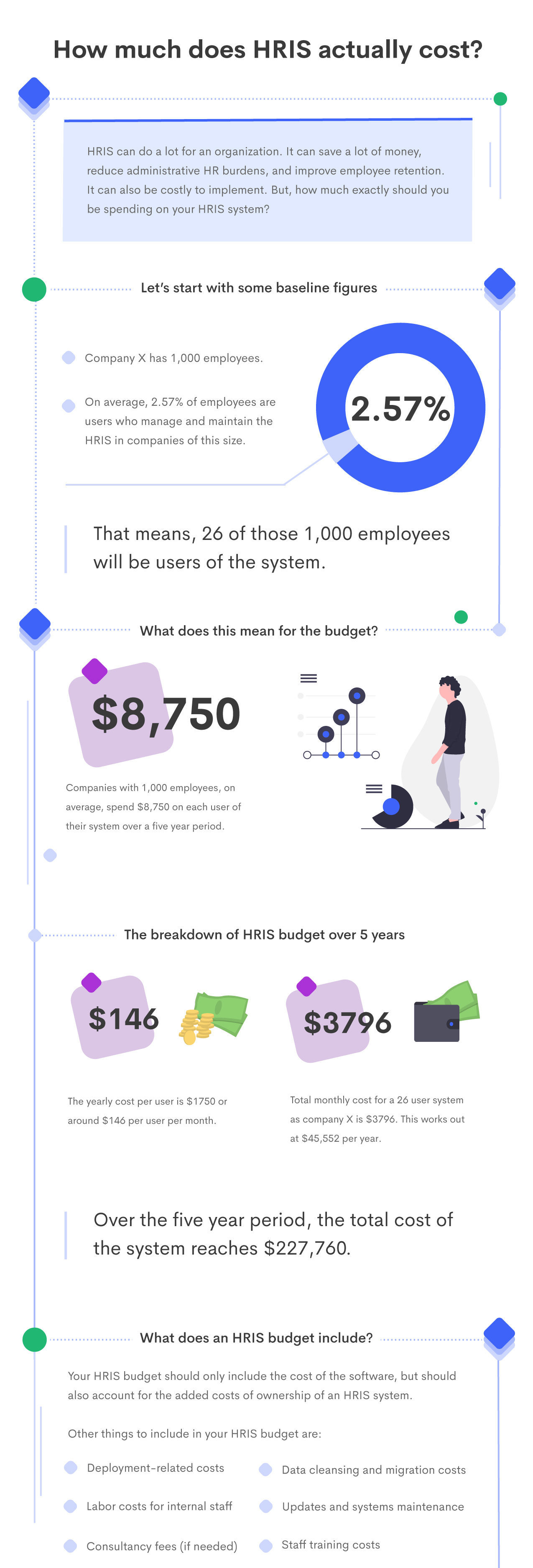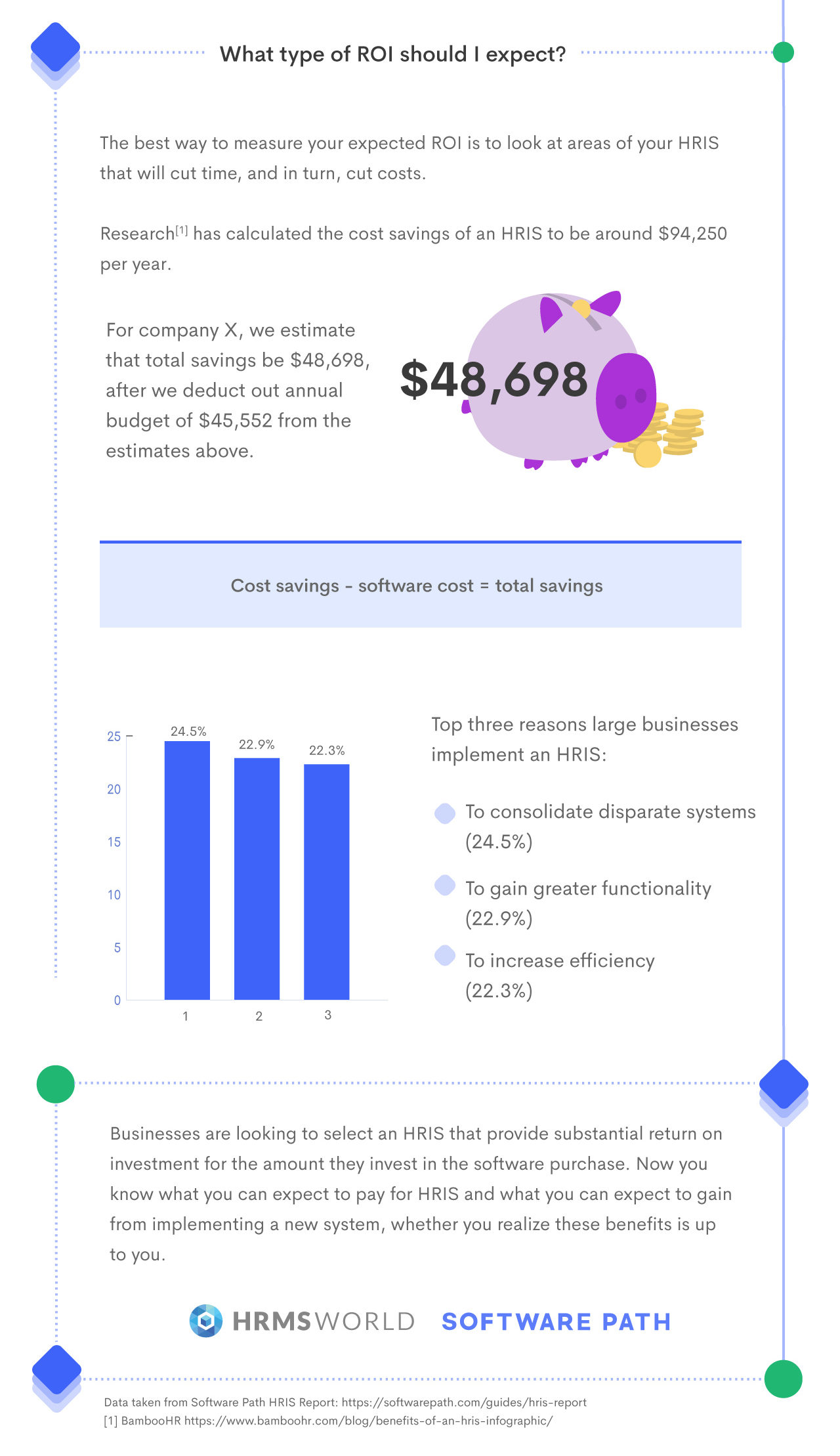If you’re aiming to revolutionize and automate your recruitment and HR efforts, you might be looking for a new HR Information System (HRIS). It will streamline your procedures, integrate your hiring with the rest of your HR function, automate elements of the assessment process, help with compliance issues, and reduce turnover.
With the right HRIS, you’re also able to take your recruiting activities into the social media world, creating new, previously untapped talent pipelines. The benefits are clear.
But what about the costs and your HRIS ROI? After all, according to a 2019 Software Path survey, the average HRIS budget (across businesses of all sizes) comes in at $6,125 per user. That’s not an insignificant amount of money, especially if your HR department works with a restricted budget.
If you want to know whether your HRIS was a good buy, whether you got a good return on your investment, you can get your answer in two ways.
The first is anecdotal (on the lines of, Chris in Payroll says everything is so much easier now), and the second is data-based. The first is tempting because it’s so easy to do, but the second will actually tell you whether your new HRIS has been worth it.
What’s in?
Like what you see?
Don’t miss out. Subscribe to our quarterly digest to get the latest TA and TM resources delivered right to your inbox.
What is a HRIS?
An HRIS, human resource information system, also known as human resource management system (HRMS) is an HR software that helps companies organize, analyze and manage employee-related data in a centralized repository. Business are able take care of various activities related to HR, recruitment, payroll management, etc.
Implementing an HRIS is an important step in the digital HR transformation of your organization. Beside that, using such system has numerous benefits including:
- Automating recurring tasks
- Reaching large candidate pools
- No need to store paper materials
- Employee benefits administration
- Management of Learning & Development
- Exact attendance tracking
- And much more.
However, HRIS is not cheap and that’s why it’s important to carefully consider its costs against ROI.

Using an HRIS results in significant time savings for HR employees.
The cost breakdown of your new HRIS
First of all, let’s walk through this infographic and look at the average HRIS-related costs. Then we’ll look at how to assess the benefits and measure the ROI.
If you want to figure out the actual cost of your HRIS, you need to start with breaking it down and include various related fees.
When putting an HRIS into action, it is common to pay by the user. Not everyone in your organization will be an HRIS ‘user’; aside from any employee self-service functionality available to everyone, users who can actually access the system and run procedures, juggle the data, etc. may be relatively few.
For example, for a company of 1,000 employees, just 26 will be users that you need to pay for. And for a company of that size, the cost of the software will come out around $8,750 per user (based on the system having a 5-year lifespan). This makes the quarterly cost to the company $3,796, on average.
However, bear in mind that these figures are for more than just the ticket price on the HRIS vendor’s website. A little like buying a car, the true cost includes all kinds of extras. The total cost of ownership of an HRIS includes the following so-called ‘hidden costs’ in addition to the vendor’s price. These include:
Deployment-related costs – The cost of the nuts and bolts technical implementation, including hardware costs if you go for an on-premise system rather than a cloud option.
Data cleansing and migration costs – Any system is only as good as the data it contains and HRIS implementation includes a data cleansing exercise, checking the accuracy and filling any gaps in the records.
Labor costs for internal staff – Basically, any time your people spend on HRIS selection and implementation is a cost. You’re paying for their time, as always.
Updates and system maintenance – Again, your HRIS is only worth having as long as it is maintained, any patches installed, integrations with new systems, etc. Your vendor may charge extra for an enhanced aftercare and support package.
Consultancy fees (if needed) – You don’t always have either the time or the skills to be sure of getting the best system, or getting that system up and running; HRMS specialists are available to support your system selection and/or implementation… and that’s another cost.
Staff training costs – Unless your new HRIS is a carbon copy of the old (in which case, why bother), your users will need training. Training costs involve both design and delivery of the learning materials and the time those users are getting paid to attend the training). Furthermore, you may be providing basic training sessions and materials for all employees, especially if self-service functions are new to them.
For an ‘average company’ of 1,000 employees, the total cost comes to $48,552 per year.

But what have you saved?
Measuring your HRIS ROI
The next step in the ROI process is to measure the improvements and benefits that you’ve accrued from your new system. What time has it saved you? What performance improvements have resulted? And what’s the dollar value of those benefits?
Your sources of data include:
- Interviews – with individuals or focus groups, depending on what data you’re collecting.
- Performance monitoring – boosts to HR productivity KPIs, impact of time savings for employees and managers in general.
- Surveys and questionnaires – gathering user survey results. Have the option of being anonymous, which can result in more accurate (and honest) information.
- Statistical reports and analytics produced by the system itself – marking improvements in key metrics; e.g. for recruitment, you might look at the impact on time to hire, source of hire, and offer acceptance rates.
Measuring the less tangible impacts, such as brand awareness, competitive advantage, intellectual capital, etc. is much more difficult and it may be that such tricky measurements are done for a later, deeper ROI exercise. Initially, the board is likely to want to hear something more straightforward.
In our example company, the total savings from an HRIS will be $94,250 per year.
Subtract the annual cost of $48,552 and that’s an HRIS ROI of $48,698 or to put it another way, an HRIS ROI of 107%.
Given that one of the top three reasons for investing in a new HRIS is to increase efficiency, recouping just over double your investment in savings doesn’t seem so bad.

To wrap it up
On paper, calculating the ROI of your new HRIS is very simple. It’s just math. The real work lies in chasing down and measuring each potential saving.
With the above, less tangible benefits together with the really nebulous potential impacts on points such as organizational hierarchy, improved team working, and even the use of automation and AI, and ROI can become a complicated calculation.
However, if you’re serious about the investment, you’ll want to know if it was worth it.
| About the Author: Dave Foxall has worked as HR Manager for the Ministry of Justice of the United Kingdom for a number of years and is a regular HRMS World contributor. He writes on a broad range of topics including jazz music, and, of course, the HRMS software market. |
How AI & recruitment technology is changing recruiting experience
Find out how tech has helped other companies grow by enhancing both the recruiters’ and candidates’ experience!



